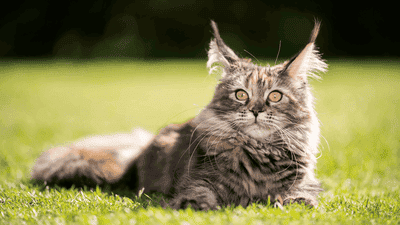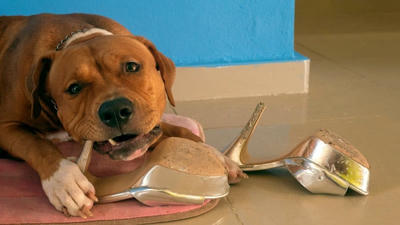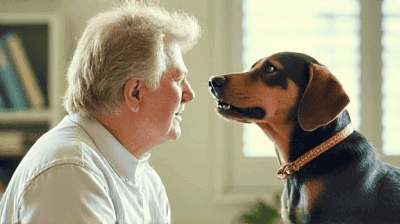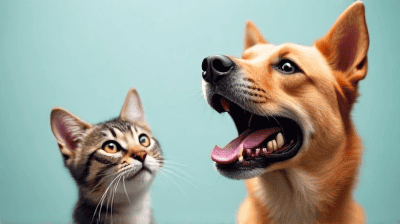In-Depth Guide to the Ragdoll Cat: Understanding Their Unique Personality and Care Needs

The Ragdoll cat is a breed that has captured the hearts of cat lovers around the world with its striking appearance and gentle demeanor. Known for their affectionate nature and striking blue eyes, Ragdolls are often referred to as "puppy-like" due to their tendency to follow their owners around and form strong bonds.
1. The History of the Ragdoll Cat
Origins
The Ragdoll cat breed was developed in the 1960s by a breeder named Ann Baker in Riverside, California. The foundation cat, a longhaired white female named Josephine, was bred with other cats possessing desirable traits, resulting in the Ragdoll’s distinctive characteristics.
Breed Development
Baker carefully selected traits such as the semi longhaired coat, blue eyes, and docile temperament to create the Ragdoll breed. The breed was officially recognized by cat registries in the 1960s and has since gained popularity worldwide.
Name Origin
The name "Ragdoll" comes from the breed’s tendency to go limp and relaxed when picked up, much like a ragdoll toy. This trait is a hallmark of their calm and trusting nature.
2. Physical Characteristics of the Ragdoll Cat

Size and Build
Ragdolls are large, muscular cats with a sturdy build. Males typically weigh between 15 20 pounds, while females weigh between 10 15 pounds.
Coat
Ragdolls have a soft, semi longhaired coat that is silky to the touch. Their coat is low shedding compared to other longhaired breeds, making them easier to groom.
Color Patterns
Ragdolls come in a variety of color patterns, including:
- Colorpoint: Darker extremities (ears, face, paws, and tail) with a lighter body.
- Mitted: Similar to colorpoint, but with white mittens on the paws and a white chin.
- Bicolor: Darker extremities with a white inverted V on the face, white paws, and a white belly.
Eye Color
All Ragdolls have striking blue eyes, which can range from a pale blue to a deep sapphire hue.
3. The Unique Personality of the Ragdoll Cat
Affectionate and Social
Ragdolls are known for their affectionate and people oriented nature. They thrive on human interaction and enjoy being part of family activities.
Gentle and Docile
Ragdolls are typically calm and gentle, making them ideal companions for families with children or other pets. They are rarely aggressive and tend to get along well with everyone.
Intelligent and Playful
Despite their laid back demeanor, Ragdolls are intelligent and enjoy interactive play. They can learn tricks and enjoy puzzle toys that challenge their minds.
Dog Like Traits
Ragdolls are often described as "doglike" due to their tendency to follow their owners around, greet them at the door, and even play fetch.
4. Care Requirements for Ragdoll Cats

Grooming
Although Ragdolls have long fur, their coat is relatively easy to maintain. Regular brushing (2 3 times a week) helps prevent matting and reduces shedding. Pay special attention to areas like the belly and underarms, where tangles can occur.
Nutrition
A balanced diet is essential for maintaining your Ragdoll’s health. Choose high quality cat food that meets their nutritional needs, and avoid overfeeding to prevent obesity.
Exercise
Ragdolls enjoy playtime and benefit from regular exercise to keep them mentally and physically stimulated. Interactive toys, climbing towers, and scratching posts are great options.
Litter Box Maintenance
Ragdolls are clean cats and prefer a well maintained litter box. Scoop the litter box daily and change the litter regularly to keep it fresh.
5. Health Considerations for Ragdoll Cats
Common Health Issues
Ragdolls are generally healthy cats, but they can be prone to certain genetic conditions, including:
- Hypertrophic Cardiomyopathy (HCM): A heart condition that can lead to heart failure. Regular veterinary checkups can help detect this condition early.
- Polycystic Kidney Disease (PKD): A genetic disorder that causes cysts to form in the kidneys. Responsible breeding practices can reduce the risk of PKD.
- Bladder Stones: Ragdolls may be more susceptible to bladder stones, which can cause discomfort and urinary issues.
Preventive Care
To ensure your Ragdoll’s long term health, schedule regular veterinary checkups, keep their vaccinations up to date, and monitor their weight and diet.
Lifespan
With proper care, Ragdolls can live between 12 17 years or longer. Providing a loving home, a balanced diet, and regular veterinary care can help your Ragdoll live a long, healthy life.
6. Training and Socialization

Litter Training
Ragdolls are naturally clean and usually pick up litter training quickly. Provide a clean, accessible litter box and encourage its use from a young age.
Socialization
Expose your Ragdoll to different people, pets, and environments from a young age to help them develop into a well adjusted adult cat.
Positive Reinforcement
Use positive reinforcement, such as treats and praise, to teach your Ragdoll new behaviors and tricks. Avoid harsh punishment, as it can damage the bond between you and your cat.
7. Living with a Ragdoll Cat
Indoor vs Outdoor
Ragdolls are best suited to indoor living, as their trusting nature makes them vulnerable to predators, traffic, and other outdoor dangers. Provide a stimulating indoor environment with plenty of toys and climbing structures.
Compatibility with Other Pets
Ragdolls generally get along well with other cats and dogs, especially if introduced gradually and positively. Their gentle nature makes them excellent companions for multi pet households.
Family Life
Ragdolls thrive in homes where they receive plenty of attention and affection. They are well suited for families, singles, and seniors alike, as long as their social needs are met.
8. Tips for Potential Ragdoll Owners
Choosing a Ragdoll Kitten
When selecting a Ragdoll kitten, look for a reputable breeder who prioritizes health and temperament. Ask for health clearances for the parents and visit the breeder to ensure the kittens are raised in a clean, loving environment.
Preparing Your Home
Before bringing your Ragdoll home, prepare a safe and comfortable space with all the essentials, including a litter box, food and water bowls, toys, and a cozy bed.
Building a Bond
Spend quality time with your Ragdoll to build a strong bond. Engage in play, grooming, and cuddling to show them love and affection.
9. Fun Facts About Ragdoll Cats
- Ragdolls are one of the largest domestic cat breeds, often reaching the size of a small dog.
- Their semi longhaired coat is a result of a genetic mutation that affects the texture of their fur.
- Ragdolls are known for their "floppy" behavior, often going limp when picked up or cuddled.
- Despite their large size, Ragdolls are clumsy jumpers and prefer staying closer to the ground.
Conclusion
The Ragdoll cat is a truly unique and enchanting breed, combining beauty, intelligence, and a loving personality. Understanding their care needs and personality traits is essential for providing them with a happy and fulfilling life. Whether you’re a first time cat owner or an experienced pet parent, the Ragdoll’s gentle and affectionate nature makes them a wonderful addition to any home. By investing time and care into your Ragdoll, you’ll be rewarded with a loyal and loving companion for years to come.








